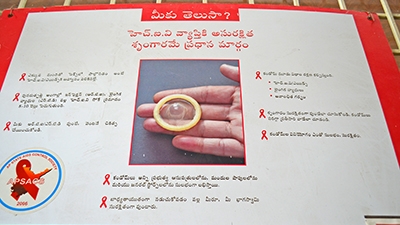A three-part World Bank publication series addresses the characteristics of the HIV epidemic in three vulnerable populations in low- and middle-income countries, and recommends cost-effective approaches to curb the epidemic in these groups.
The Global HIV Epidemics Among Sex Workers (November 2012)
The World Bank, United Nations Population Fund (UNFPA), and Johns Hopkins Bloomberg School of Public Health collaborated on this study, which finds that a community empowerment approach to HIV prevention, treatment, and care is cost-effective, with significant projected impact on HIV incidence among sex workers and transmission beyond the sex workers community.
According to the study, globally, HIV disproportionately affects sex workers in low- and middle-income countries. The overall HIV prevalence among female sex workers was 11.8%, with the prevalence in sub-Saharan Africa at 36.9%. Across all regions, prevalence among female sex workers was 13.5 times the overall HIV prevalence among the general population of women ages 15-49. The study emphasizes the central importance of adopting a rights-affirming, empowerment-based approach.
The Global HIV Epidemics Among People Who Inject Drugs (November 2012)
This World Bank, Futures Group and Johns Hopkins Bloomberg School of Public Health study finds that although HIV prevalence is significantly higher among people who inject drugs than in the general adult population, the availability of antiretroviral treatment and other key prevention interventions are generally inadequate.
Study authors predict that continuing to specifically target this group with needle and syringe programs, medically assisted therapy and HIV counseling and testing, as well as increased access to antiretroviral treatment, could avert thousands of infections from 2012-2015, including 1,300 in Kenya, 4,130 in Pakistan, 1,570 in Thailand, and 3,900 in Ukraine.
The Global HIV Epidemics Among Men Who Have Sex with Men (June 2011)
This World Bank, United Nations Development Programme (UNDP) and Johns Hopkins Bloomberg School of Public Health study finds that achieving high rates of coverage of HIV/AIDS prevention and treatment services among men who have sex with men (MSM) has significant, positive impact on the overall trajectory of a country’s HIV epidemic. The authors recommend a basic package of essential services—including counseling, distribution of condoms and other safe-sex measures, community-based prevention efforts, HIV testing, and increased use of antiretroviral therapy treatment—as well as decriminalization of MSM behavior, institution of anti-homophobia policies, increased education of health care workers, and reduction of stigma in health care situations.

